.

Gasoline
stations abandoned during the fuel crisis in the winter of
1973-74 were sometimes used for other purposes. This station at
Potlatch, Washington, west of Olympia, was turned Into a religious
meeting hall. Signs painted on the gas pumps proclaim "Fill up
with the Holy Ghost and Fire... Fill up with Old Time Salvation": photo by David Falconer, April 1974
riches
.........................Run-of-the-mill
industrial revolution manufactured goods
superfluous blankets and dinged-up copper tea kettles
..............................
a necklace of old keys polished by so much touching
prestige comes from status goods 'Indian wealth'
conferring rank by way of display privileges
At Nootka Gray was charged a six inch
scrap of sheet copper (and thought it costly)
for a two feet by five jet black thick
..............................
'prime' skin..............'They do not seem to covet
usefull things' noted the Columbia's supercargo
Hoskins, in charge of the business end,
'but anything that looks pleasing
to the eye, or what they call riches'
TC: riches, from Empire of Skin, 1997
.........................Run-of-the-mill
industrial revolution manufactured goods
superfluous blankets and dinged-up copper tea kettles
..............................
a necklace of old keys polished by so much touching
prestige comes from status goods 'Indian wealth'
conferring rank by way of display privileges
At Nootka Gray was charged a six inch
scrap of sheet copper (and thought it costly)
for a two feet by five jet black thick
..............................
'prime' skin..............'They do not seem to covet
usefull things' noted the Columbia's supercargo
Hoskins, in charge of the business end,
'but anything that looks pleasing
to the eye, or what they call riches'
TC: riches, from Empire of Skin, 1997
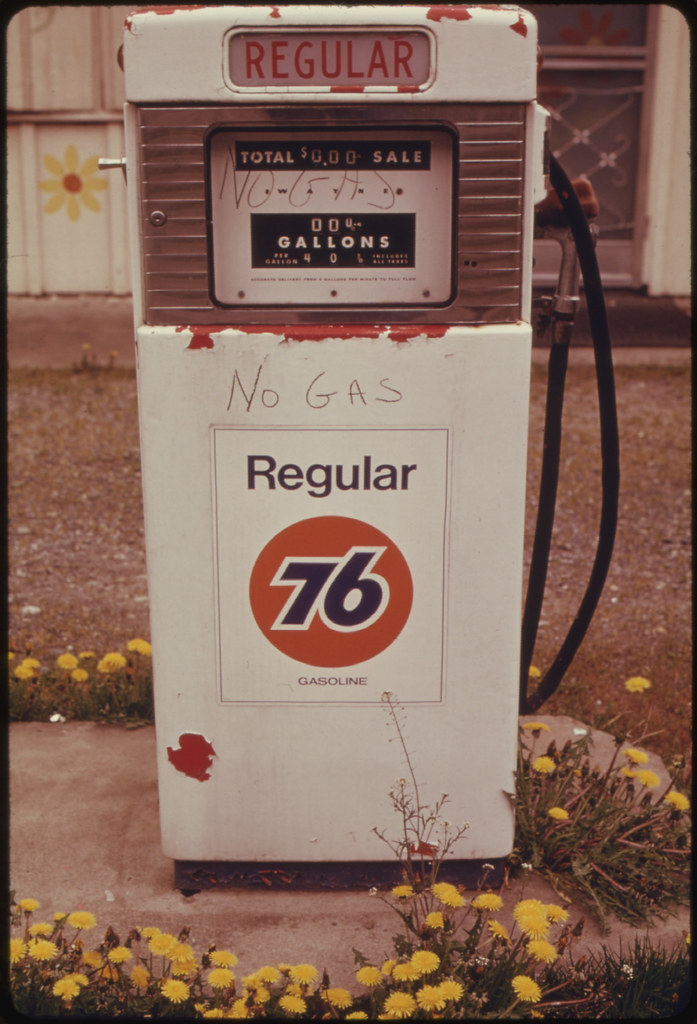
Independent dealers and major oil company dealers began to close some stations permanently during the gasoline shortage in the winter of 1973-74. Pumps such as this one, west of Olympia, Washington, became more common as shortages affected the economy from various angles: photo by David Falconer, April 1974
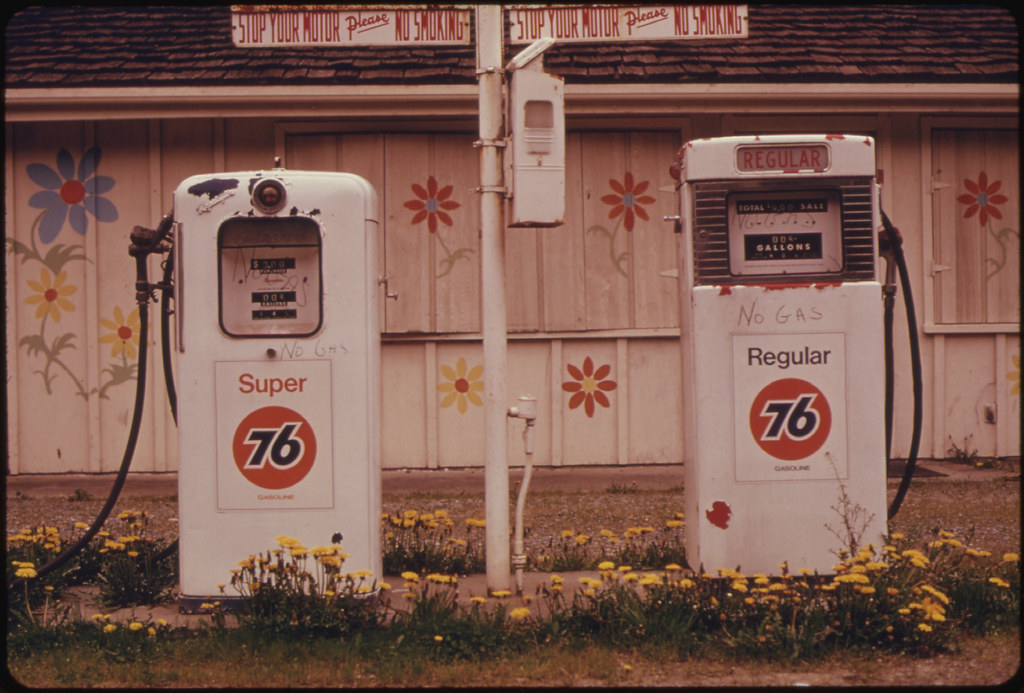
Independent dealers and major oil company dealers began to close some stations permanently during the gasoline shortage in the winter of 1973-74. Pumps such as these in Shelton, Washington, west of Olympia, became more common as shortages affected the economy from various angles: photo by David Falconer, April 1974

Independent dealers and major oil company dealers began to close some stations permanently during the gasoline shortage in the winter of 1973-74. In the Pacific Northwest pumps such as this one became more common as shortages affected the economy from various angles: photo by David Falconer, April 1974
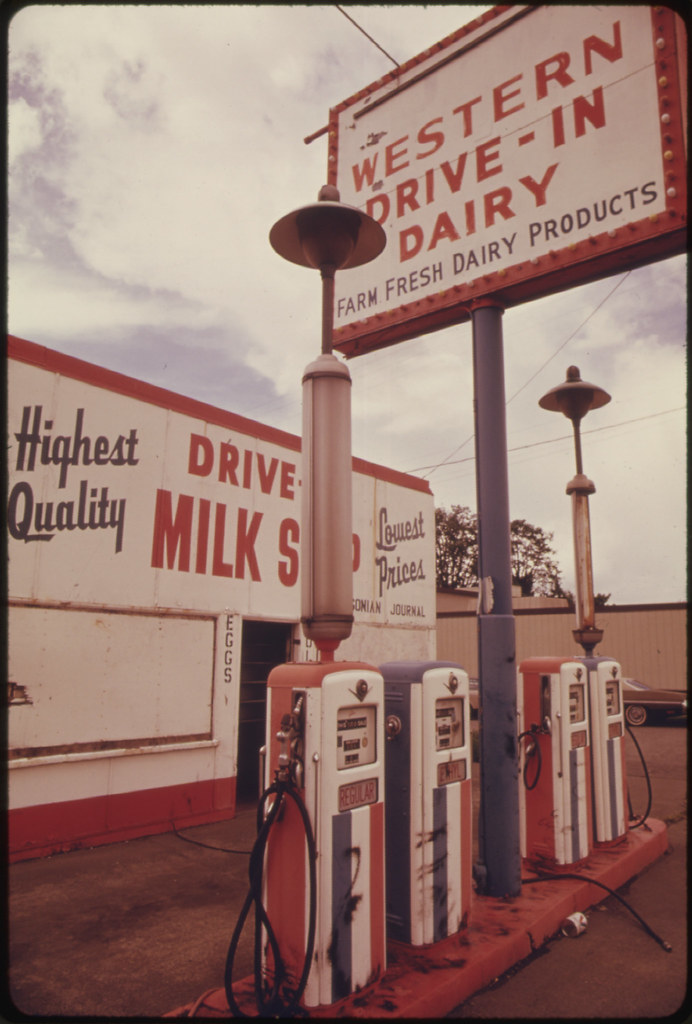
A service station in Portland, Oregon, forced to close for lack of gasoline and no Interest in discount priced milk: photo by David Falconer, May 1974
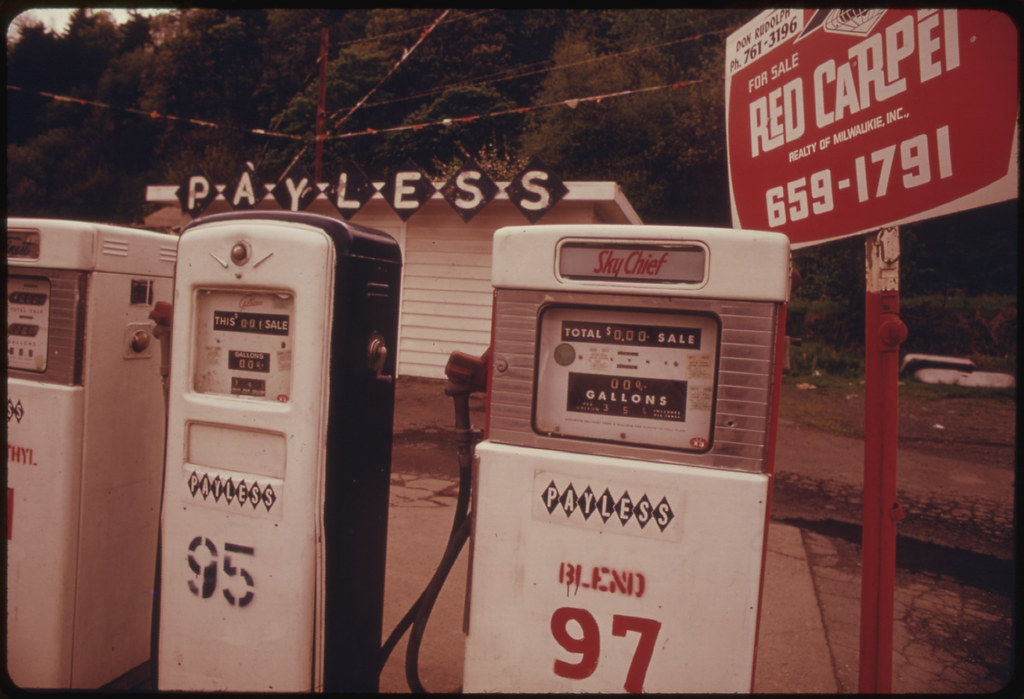
Gas station in Portland, Oregon, closed because of a lack of fuel allocation. It was one of many stations closed during the fuel crisis in the winter of 1973-74: photo by David Falconer, May 1974
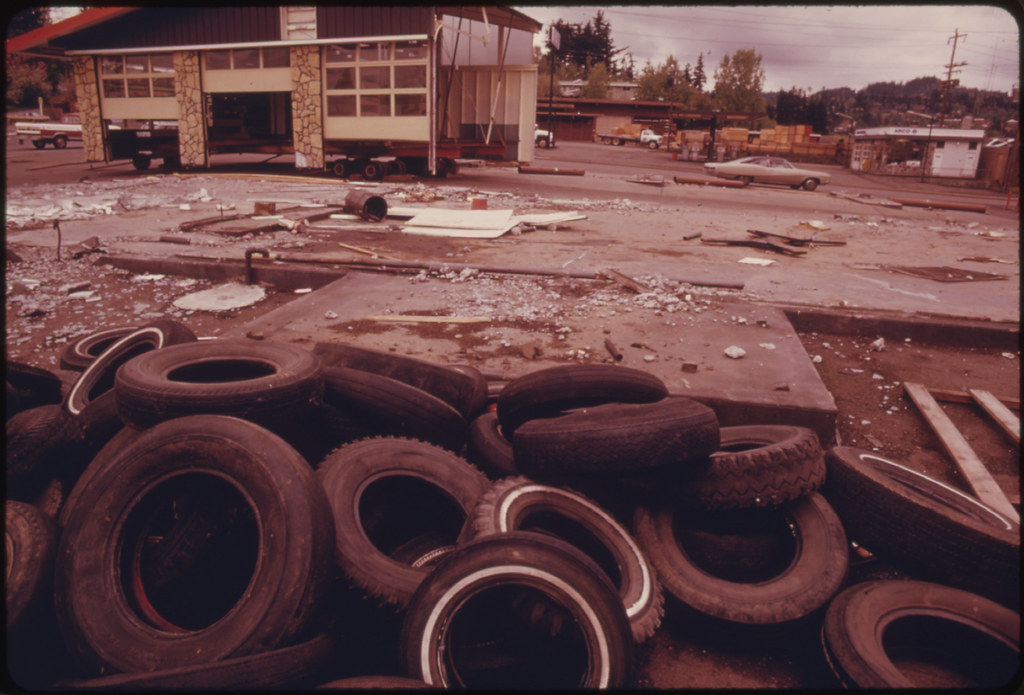
This recently built gas station had no fuel allocation and was closed, then moved from a busy intersection during the gasoline crisis of 1973-74: photo by David Falconer, May 1974
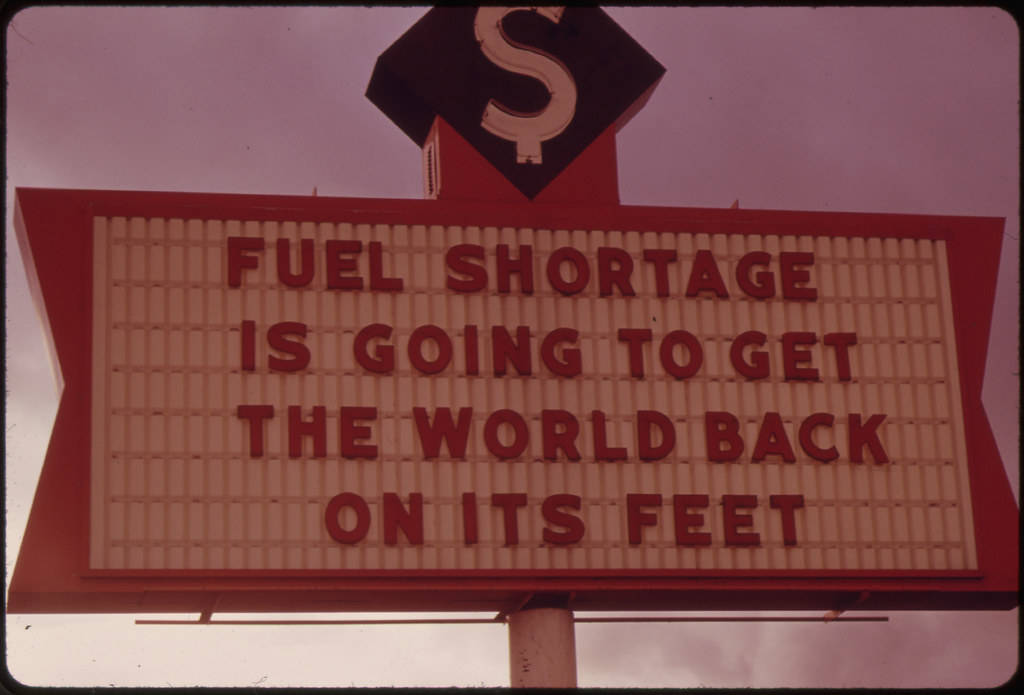
The Energy Crisis in the states of Oregon and Washington resulted in attempts at humor by businesses with darkened signs such as this one in Vancouver, Washington: photo by David Falconer, November 1973

Both Oregon and Washington states led the nation in reducing driving speeds to conserve gasoline before federal limits were passed. A speed limit sign and a reminder are shown along Interstate #5: photo by David Falconer, November 1973
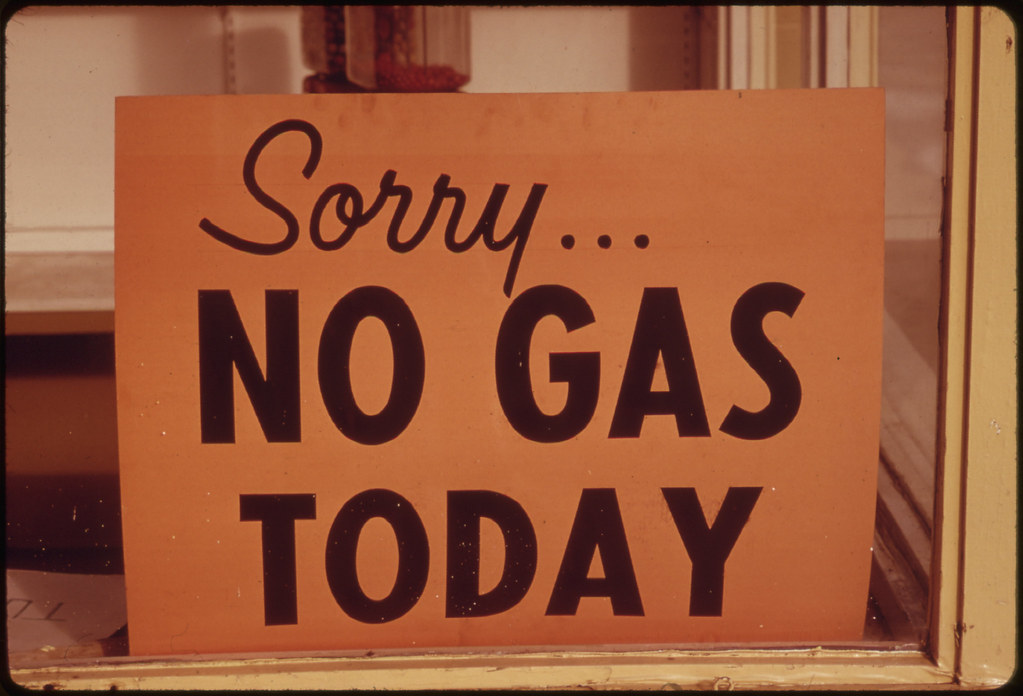
"No Gas" signs were a common sight at gas stations in Oregon, such as at this one in Lincoln City along the coast, during the Fall of 1973. Many stations closed earlier, opened later and shut down on the weekends: photo by David Falconer, October 1973
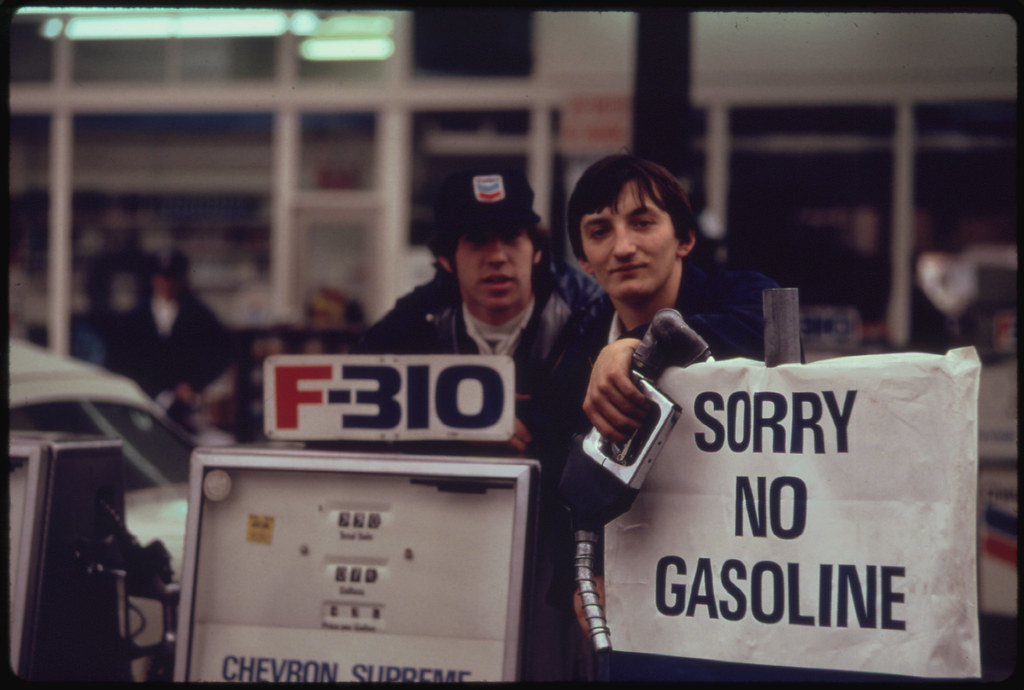
Gas station attendants peer over their "Out of Gas" sign in Portland, on day before the state's requested Saturday closure of gasoline stations: photo by David Falconer, November 1973

Downtown core area of Portland, after 7 P.M. on 2 November 1973, during the state's Energy Crisis, with few commercial and neon lighting displays. This photo looks toward the west with the Willamette River in the foreground: photo by David Falconer, November 1973

Looking Into the downtown core area of Portland, Oregon, from the West Hills. The 43-storey First National Bank Building shows lights on only a few floors at 8 P.M. during the state's Energy Crisis in the Fall of 1973: photo by David Falconer, November 1973
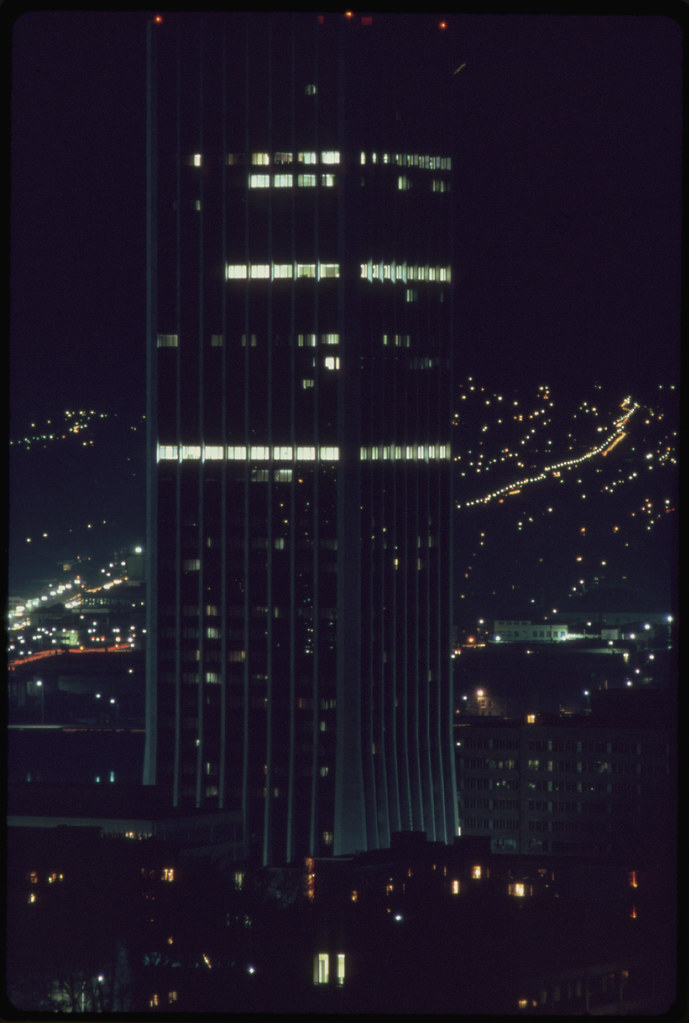
Looking Into the downtown core area of Portland, Oregon, from the West Hills. The 43-storey First National Bank Building shows lights on only a few floors at 8 P.M. during the state's Energy Crisis in the Fall of 1973: photo by David Falconer, November 1973
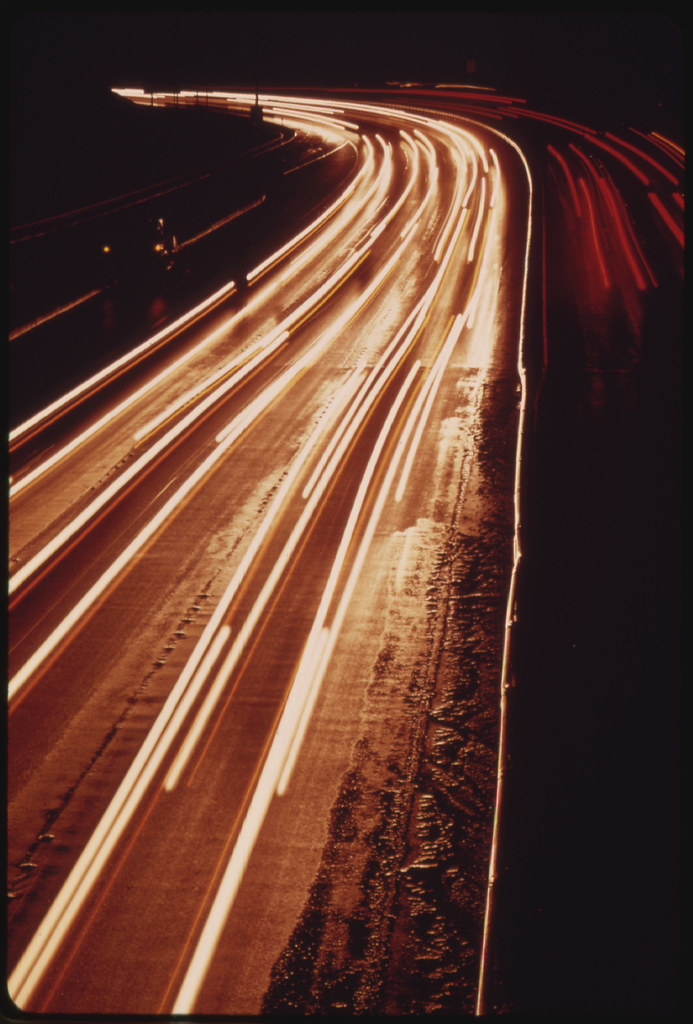
Stadium Freeway in Portland, Oregon is shown in November 1973, as It looked without street lighting. Only car lights were in evidence since freeway and major street lighting were banned by the Governor's executive order during the Energy Crisis: photo by David Falconer, December 1973
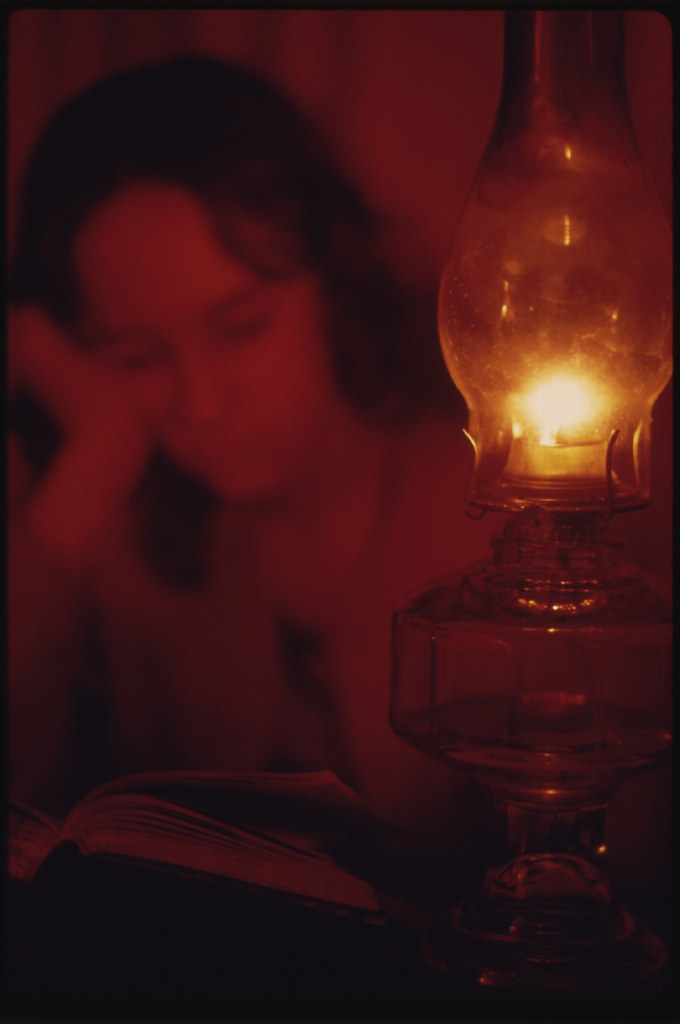
Reading and studying by kerosene lamps became more common as people tried to conserve electricity. This person in Portland, Oregon is using a lamp: photo by David Falconer, December 1973
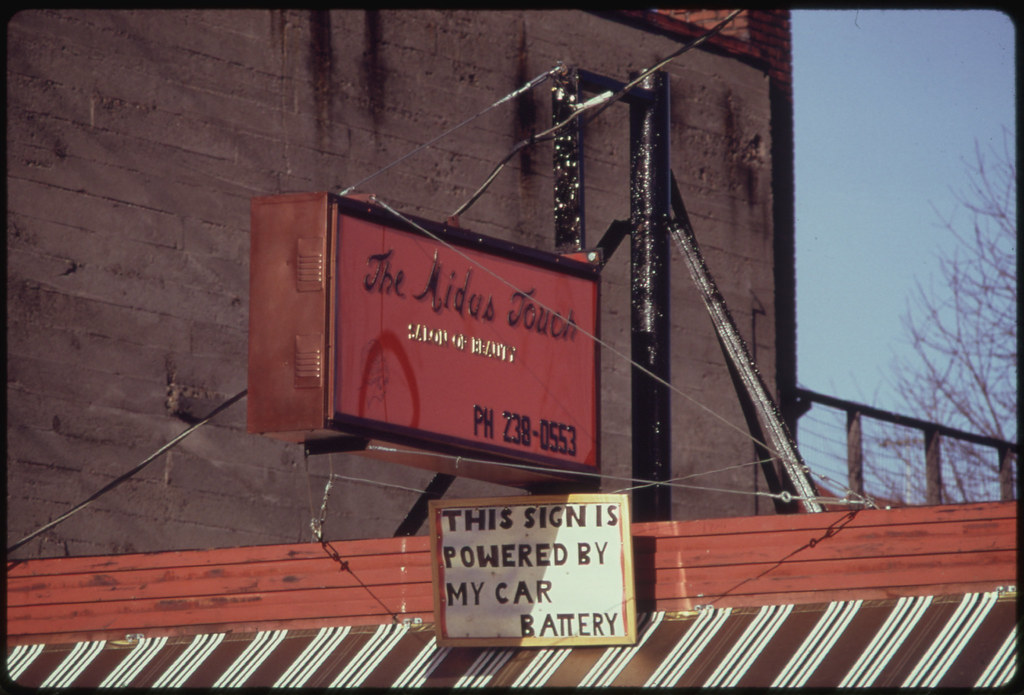
A car battery operated this neon advertising sign over a business in Portland, Oregon, during the state's Energy Crisis: photo by David Falconer, December 1973
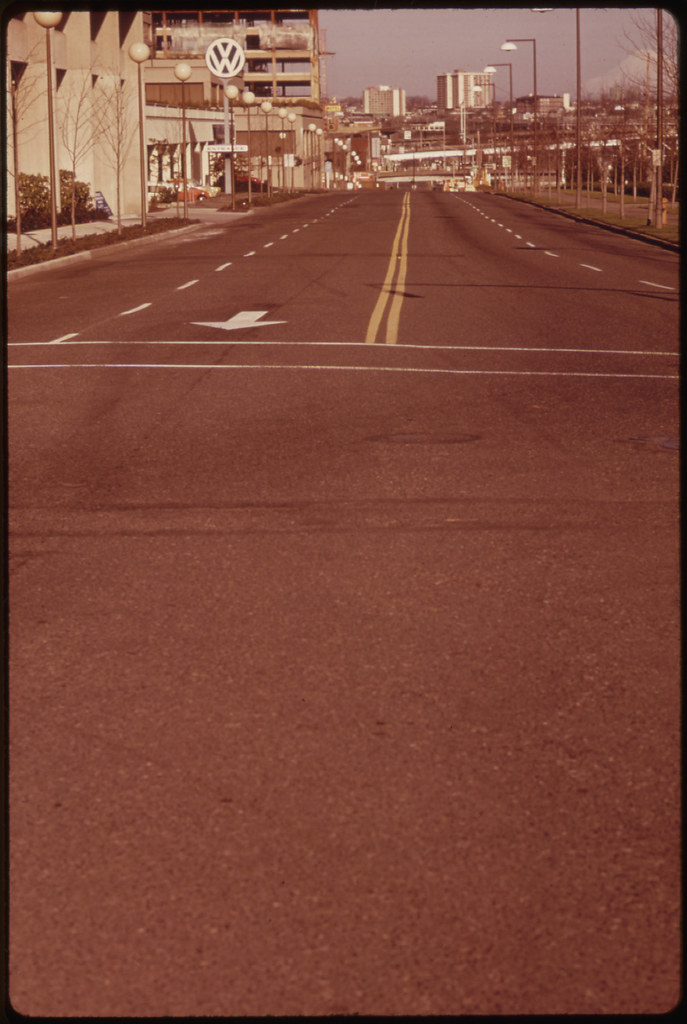
Empty streets were a common sight in Portland during the 1973 fuel crisis when gasoline stations were closed on the weekends: photo by David Falconer, December 1973

Lone car on a street usually filled with Sunday drivers gives an idea of the effect the ban on Sunday gasoline sales had on motorists: photo by David Falconer, December 1973

Some motorists, such as this man in Portland, ran out of gas and had to stand in line with a gas can during the fuel crisis in the Pacific Northwest: photo by David Falconer, December 1973
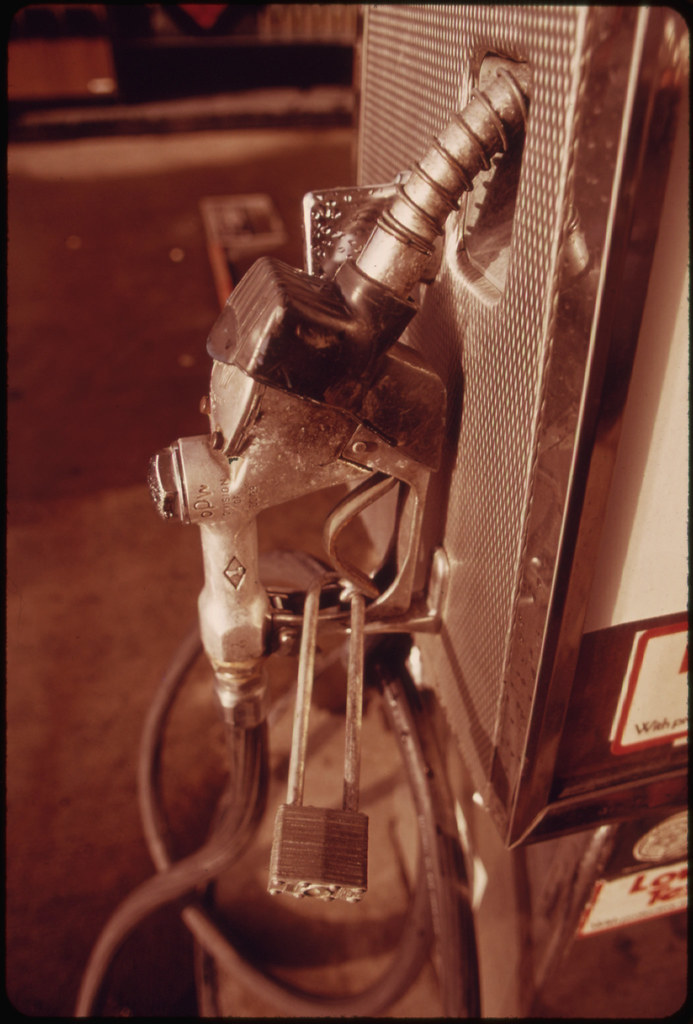
The driving public became so desperate for gasoline that many stations such as this one in Portland had to resort to locking their pumps in daytime during the fuel crisis of 1973-74: photo by David Falconer, December 1973
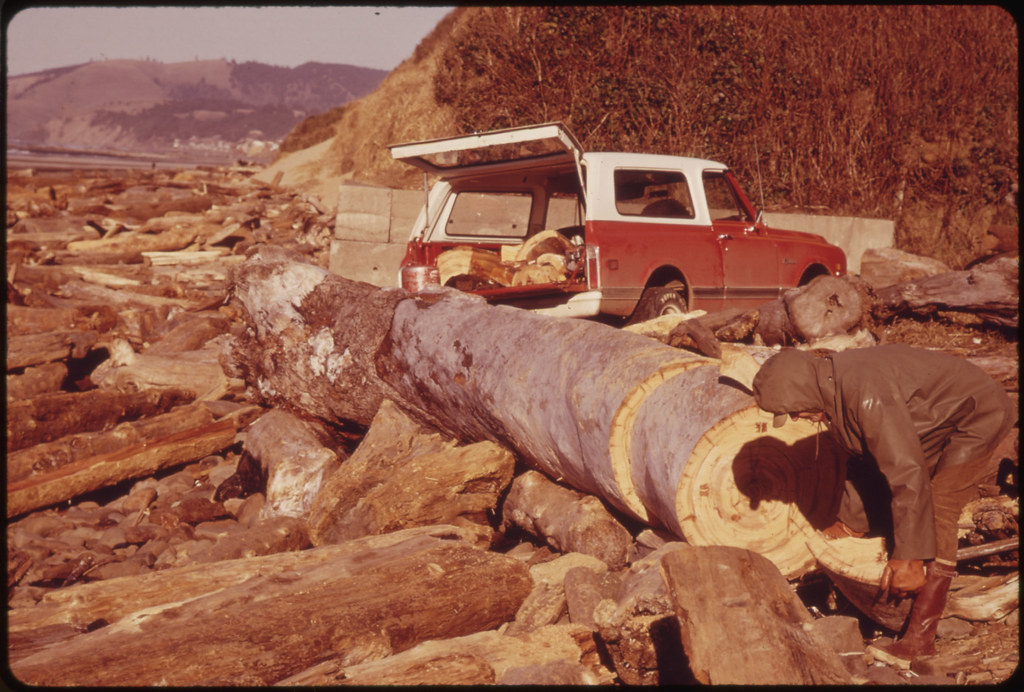
Conservation of electricity resulted in more people collecting firewood along the beaches as did this person near Lincoln City, Oregon. When this picture was taken in January, 1974, there was a wind-chill factor of minus 12 degrees: photo by David Falconer, January 1974
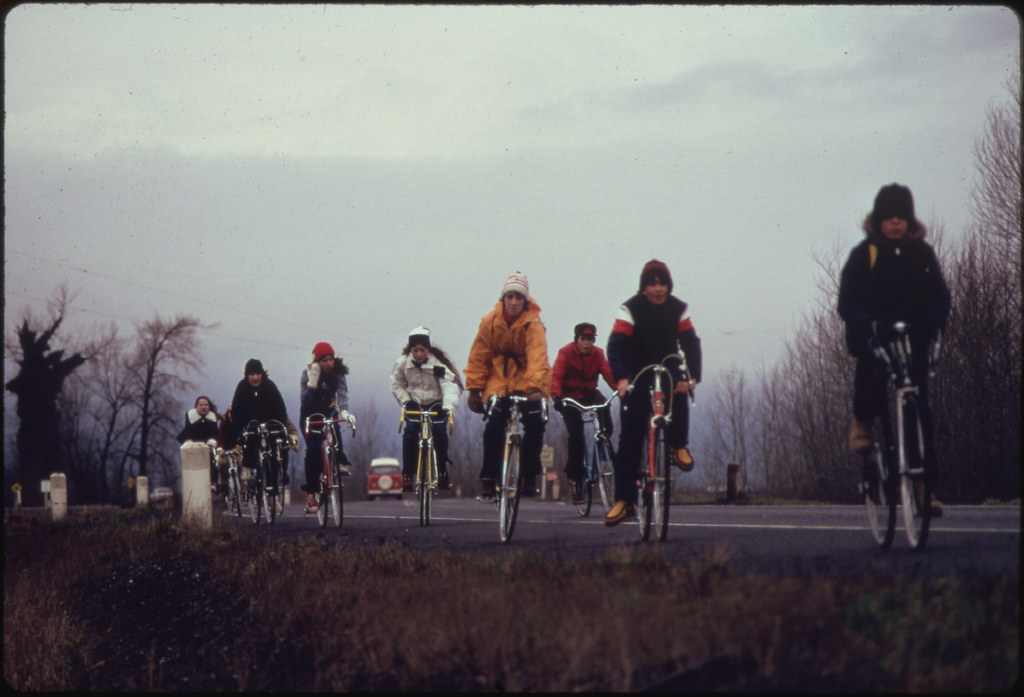
School children were forced to use their bicycles on field trips during the fuel crisis in the winter of 1974. There was not enough gasoline for school buses to be used for extracurricular activities, even during dark and rainy weather: photo by David Falconer, February 1974
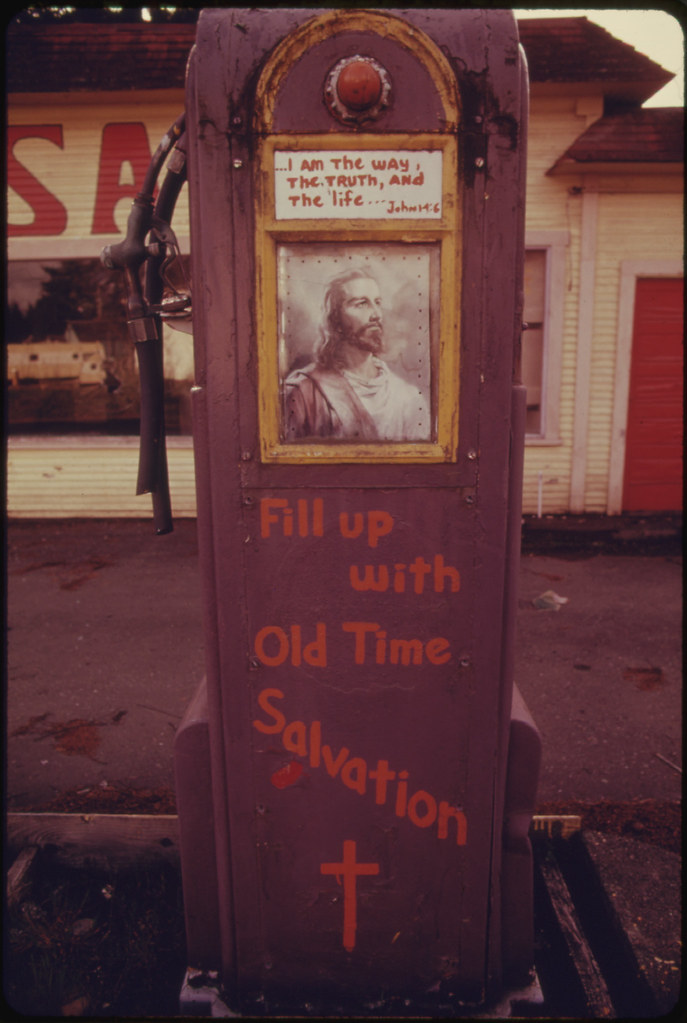
Gasoline stations abandoned during the fuel crisis in the winter of 1973-74 were sometimes used for other purposes. This station at Potlatch, Washington, west of Olympia, was turned Into a religious meeting hall. A sign painted on the gas pumps proclaimed "Fill Up with Old Time Salvation": photo by David Falconer, April 1974
Photos by David Falconer from the DOCUMERICA series, an Environmental Protection Agency program to photographically document subjects of environmental concern, compiled
1972-1977 (U.S. National Archives)



12 comments:
Happy New Year Tom!
http://inconue.wordpress.com/2012/03/01/sorry-no-gas-today-the-oil-crisisfall-1973-desole-pas-de-gaz-aujourdhui-la-crise-du-petrole-automne-1973/
An interesting twist on the classic distinction between use- & exchange-value. At some point, probably once exchange was industrialized, usefulness and destruction met like matched lovers, and called their coitus consumption.
Brad,
Sounds about right to me.
And appropriately enough, the present "highly evolved" strain of degenerate monkeys -- er, humans -- seems to constitute the "fruits" of that foul union.
It does appear from this test sample of the historical evidence that the only thing that will ever get them out of those ruinous machines of theirs is the forcible withdrawal of the noxious substance that powers those machines.
Everybody understands these mechanisms, of course, but the understanding and the behaviour are separated by a wall of blind self-forgiveness.
Freud knew cigars had given him cancer, and he understood better than anyone the psychological mechanism involved -- yet after countless horrific surgeries, and finally with a painful metal prosthesis replacing the natural wall between oral and sinus cavities, he went on puffing until finally the habit killed him.
Would a Colobus monkey be so dumb?
By the by, the Gray mentioned in the poem was a fur trader out of Boston who "traded" bits of worthless metal to the natives at Nootka Sound, on what is now called -- in honour of another white man, George Vancouver, who sailed round it -- Vancouver Island.
Vancouver's voyage to the Northwest Coast was a matter of the global imperial expansion of the British Empire.
Robert Gray's voyage was on the other hand a typical Yankee junket, strictly for profit. The Boston traders had become adept at exploiting the natives' desire to acquire these otherwise worthless metal items as potlatch (ceremonial barter) goods -- along with their concomitant willingness, driven by this acquisitive desire, to exterminate the sea otter population on that coast (their principal source of sustenance, since "time immemorial").
The skins were then taken to Canton, where they brought $100 apiece in blood money from rich mandarins (the .0001% of that historical epoch, as it were).
Along the way Gray accidentally discovered the mouth of the Columbia River, which he named after his ship -- the Columbia, out of Boston.
This occurred in April 1792. Six months later Vancouver returned to the same spot, and did a more formal cartographic survey.
In case anyone should be interested in this abstruse historical topic, some further excerpts from Empire of Skin:
The Apparitional Canoe is a sort of condensed digest version of the work.
And then too:
After the Taking of the Ship
By the Sound
The Ya'ai
The Whaler's Wife
Ritual Business
I've been enjoying Beyond The Pale for quite some time now, I hope that it and you and your family have a great year.
Kevin, thanks very much and the same to you. The enjoyment is mutual.
(Kevin's great photography site can be found via the side column link list here, under the title East of West L.A.)
And before I forget -- a happy New Year to you, too, L'Enfant!
(And in case anyone was wondering -- ? -- the title of this post was prompted by the location of the top and bottom photos, taken in -- yes, Potlatch, Washington.)
The empty streets: In 2010, Eyjafjallajökull, an Icelandic volcano, erupted. All flights were cancelled across UK airspace. While the voices of industry raged across the airwaves, you could look up into a good, clear sky. It was wonderful.
Potlatch: the town looks as if it's been on the wrong side of the ceremony for a long time.
For us, the ceremony is coming close to the end.
WB,
Yes, the closing Ceremony.
I am reminded by your comment that the song by that name was one of the last Ian Curtis wrote. He performed it in public exactly once, 16 days before hanging himself in the kitchen of his house on Barton Road in Macclesfield.
That performance occurred at a venue near you, as it should happen, so all this loops around and almost catches its tail.
Ian Curtis w/Joy Division: Ceremony (live at High Hall, Birmingham University, 2 May 1980)
Oh I'll break them all, no mercy shown
Heaven knows, it's got to be this time
As to the quiet and clean European airspace in the aftermath of those Icelandic eruptions, I saw that as the gift of a God whose mercy is always abused and spurned by the infinitely self-forgiving exceptionalist degenerate monkey pack.
A closed airport is a blessing for the upper atmosphere.
After Grimsvötn, Edinburgh Airport, 2011 (see: images four through six)
Post a Comment